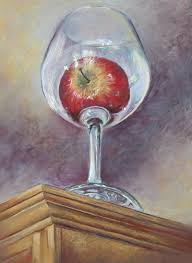 Symbolism and allegory are two intricately linked aspects of poetry. Symbolism is a tangible object that represents another aspect beyond its literal meaning, (DiYanni, 2008, p. 536). Allegory is when the events, characters, and places in the narrative contain a symbolic meaning, (DiYanni, 2008, p. 537). Emily Dickinson’s poem Because I could not Stop for Death is an example of an allegorical poem. It has plenty of instances of symbolism, but the places described in the poem and the personification of death are the two important symbols to consider, therefore setting it apart as an allegorical work of literature.
Symbolism and allegory are two intricately linked aspects of poetry. Symbolism is a tangible object that represents another aspect beyond its literal meaning, (DiYanni, 2008, p. 536). Allegory is when the events, characters, and places in the narrative contain a symbolic meaning, (DiYanni, 2008, p. 537). Emily Dickinson’s poem Because I could not Stop for Death is an example of an allegorical poem. It has plenty of instances of symbolism, but the places described in the poem and the personification of death are the two important symbols to consider, therefore setting it apart as an allegorical work of literature.
Lines 9-13 of the poem could be a representation of the narrator seeing all the central events of her life or human life in general before she dies, or before the narrator and death pass “the Setting Sun/Or rather—He passed Us.” One more example of the allegorical nature of Dickinson’s poem would be lines 17-20, when she describes “The cornice—in the Ground.” The cornice could represent her own grave.
Syntax is the grammatical way in which the words come together to create a feeling, (DiYanni, 2008, p. 542). Towhomitmayconcern by Sonia Sanchez is a poem brought to life because of the use of syntax. The words are spelled out how the narrator would sound them out; in effect the reader ‘hears’ the voice of the narrator with lines like “ima gonna stake you out”.
 Rhythm and meter are two elements of poetry that both describe the flow and measure it as well. The prevailing meter in Her Kind is iambic pentameter. Most of the poem's lines contain ten syllables, with two syllables per foot. To keep the poem moving, the author Anne Sexton variegates from ten syllables per line, to eight, nine, and five. Altogether, the poem has a lilting quality to it, primarily due to the author's use of caesura and enjambment. The run-on lines pull the reader’s eye down to read more the poem, and each pause sets the necessary rhythm for the poem to follow.
Rhythm and meter are two elements of poetry that both describe the flow and measure it as well. The prevailing meter in Her Kind is iambic pentameter. Most of the poem's lines contain ten syllables, with two syllables per foot. To keep the poem moving, the author Anne Sexton variegates from ten syllables per line, to eight, nine, and five. Altogether, the poem has a lilting quality to it, primarily due to the author's use of caesura and enjambment. The run-on lines pull the reader’s eye down to read more the poem, and each pause sets the necessary rhythm for the poem to follow.
Langston Hughes accents his poem I Too to create a pattern and tone in each line. Every line seems a proclamation and every important as the one the precedes it: “But I laugh/And eat well/And grow strong.”
DiYanni, R. (2008). Literature approaches to fiction, poetry, and drama [2nd Ed.]. New York: McGraw Hill

This has been so helpful to me in my college lit courses. Don't worry, though. I ALWAYS cite you. ;)))
ReplyDeleteKeep up the great work!
That is immensely flattering, and I hope you don't cite me too often, as I really only pretend to know what I'm doing ;)
ReplyDeleteI am jealous I came across this after I already took the course. I love the analysis, i went back to see the differences and it is amazing what they are. Keep up the great work.
ReplyDeleteI don't get on here as often as I should, but I appreciate the kudos!
Delete